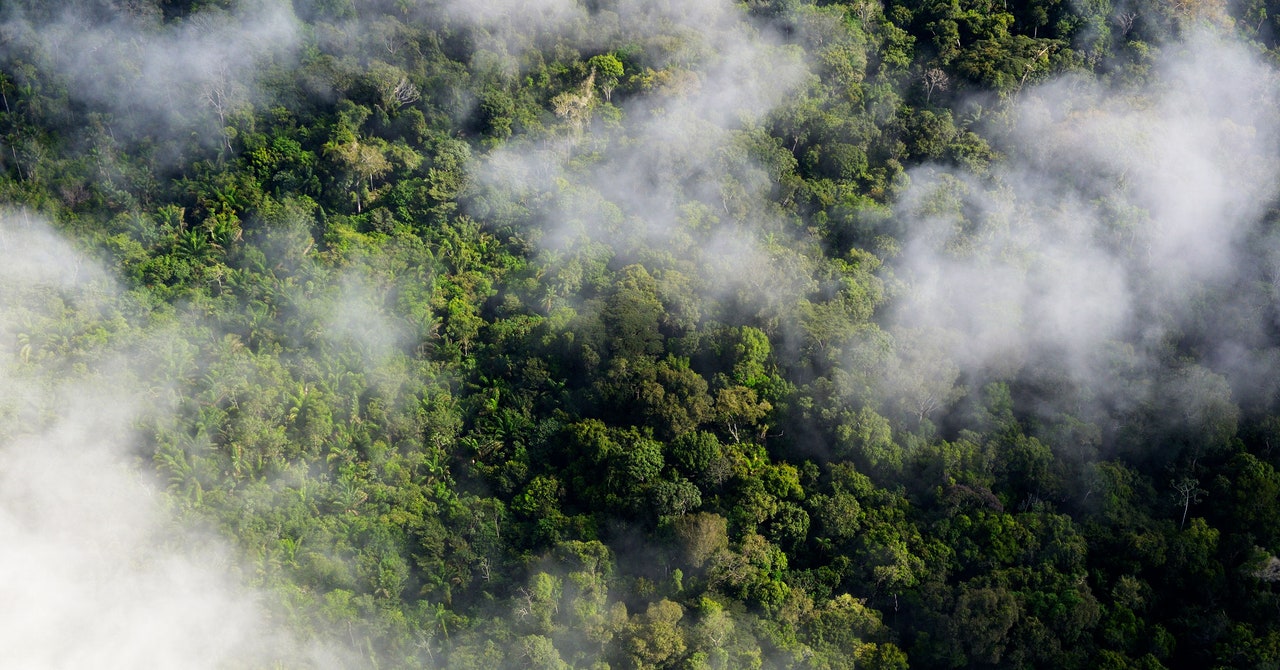
Every year between September and December, Lubna Dada makes clouds. Dada, an atmospheric scientist, convenes with dozens of her colleagues to run experiments in a 7,000-gallon stainless steel chamber at CERN in Switzerland. “It’s like science camp,” says Dada, who studies how natural emissions react with ozone to create aerosols that affect the climate.
Clouds are the largest source of uncertainty in climate predictions. Depending on location, cloud cover can reflect sunlight away from land and ocean that would otherwise absorb its heat—a rare perk in the warming world. But clouds can also trap heat over Arctic and Antarctic ice. Scientists want to know more about what causes clouds to form, and if that effect is cooling or heating. And most of all, says Dada, “We want to know how we humans have changed clouds.”
In the sky, aerosol particles attract water vapor or ice. When the tiny wet globs get large enough, they become seeds for clouds. Half of Earth’s cloud cover forms around stuff like sand, salt, soot, smoke, and dust. The other half nucleates around vapors released by living things or machines, like the sulfur dioxide that arises from burning fossil fuels.
At CERN, scientists replicate that process by injecting the steel chamber with vapors that represent specific environments. (It’s called the CLOUD chamber, for Cosmics Leaving Outdoor Droplets.) For example, they can mimic the gases found above cities. But Dada, who normally works at the Paul Scherrer Institute in Switzerland, went to CERN to peer into the past. Her team of scientists from around the world wanted to recreate the air above forests, because a “pristine” atmosphere hints at what cloud formation was like before industrialization. “We need this comparison to the time when there were no human emissions,” she says, “so we can fix our climate models.”
In a paper published this month in Science Advances, Dada’s team establishes a new heavy hitter in cloud creation: a kind of chemical released by trees. Trees emit natural volatiles like isoprene and monoterpenes, which can spark cloud-forming chemical reactions. Dada’s new work focuses on an overlooked class of less abundant volatiles called sesquiterpenes, which smell woody, earthy, citrusy, or spicy, depending on the molecule and type of plant or microbe that emits them.
The team shows that sesquiterpenes are more effective than expected for seeding clouds. A mere 1-to-50 ratio of sesquiterpene to other volatiles doubled cloud formation.
The role of trees in seeding clouds is important, because it suggests what the sky above some regions might be like if governments manage to tamp down sulfur emissions. In a world with less pollution, plants and trees will become more dominant drivers of cloud formation, an echo of the premodern world.
This research could help refine estimates of what the atmosphere was like before industrialization. Maybe we’ve been undercounting the world’s aerosol population by overlooking a large portion of those that come from trees. If so, climate models will need retooling.

